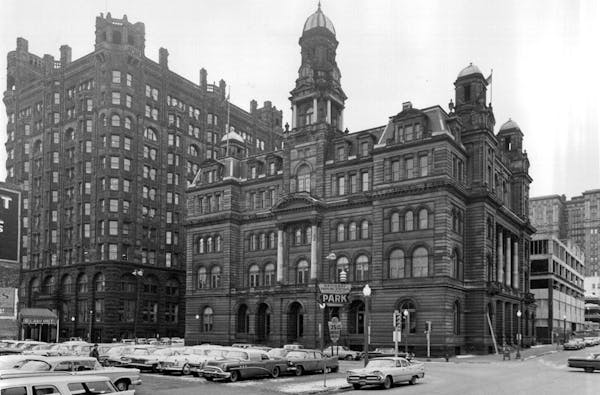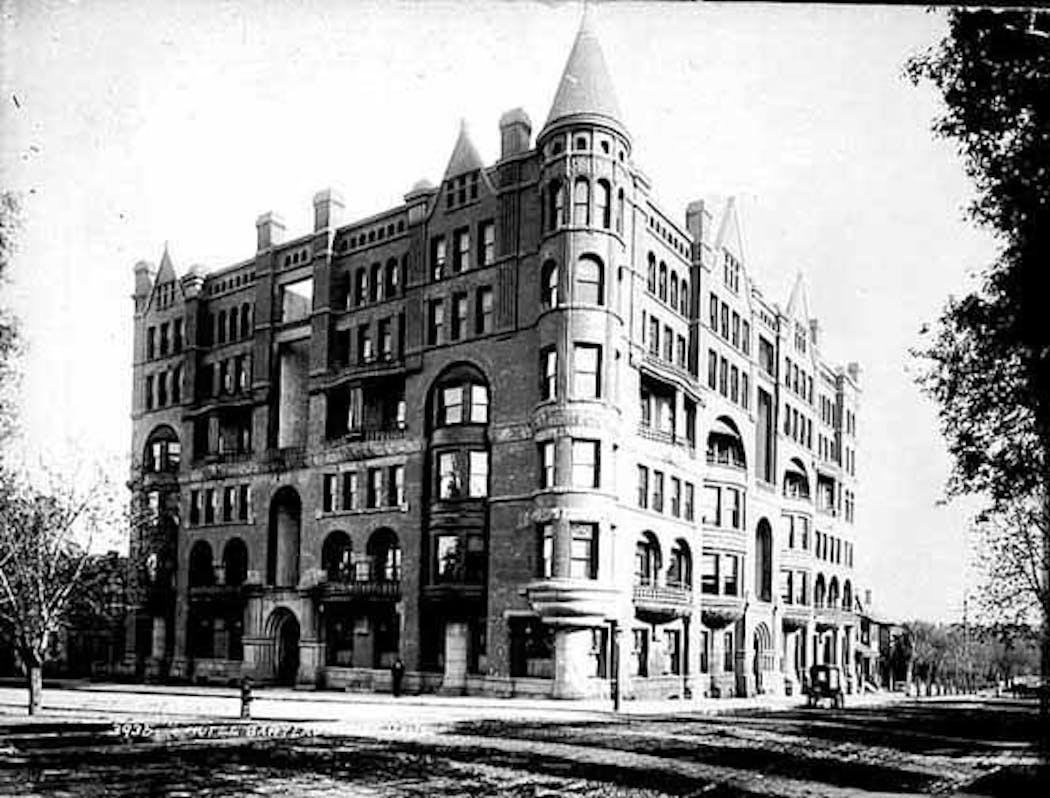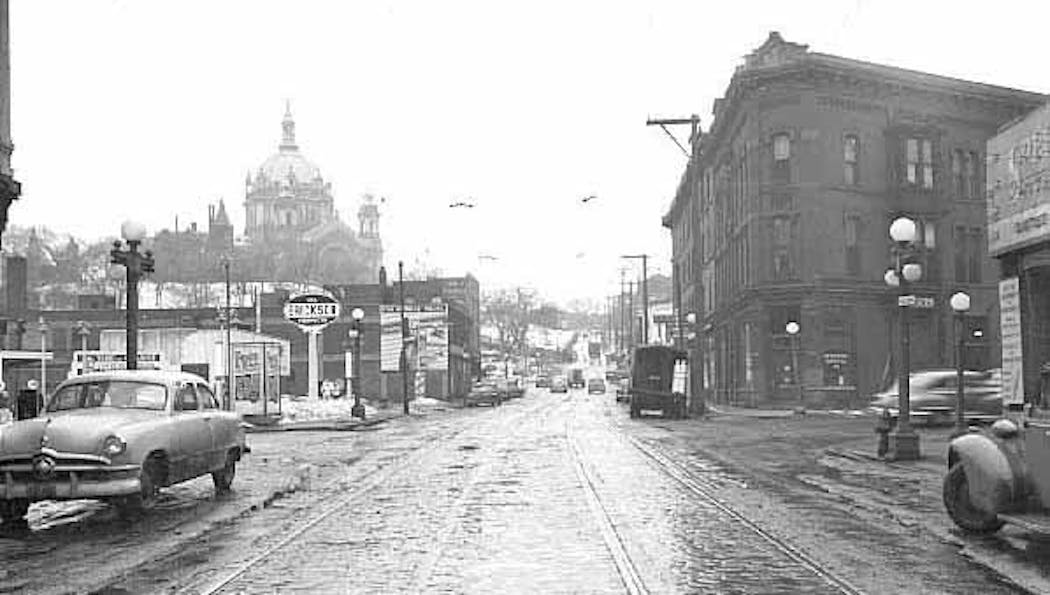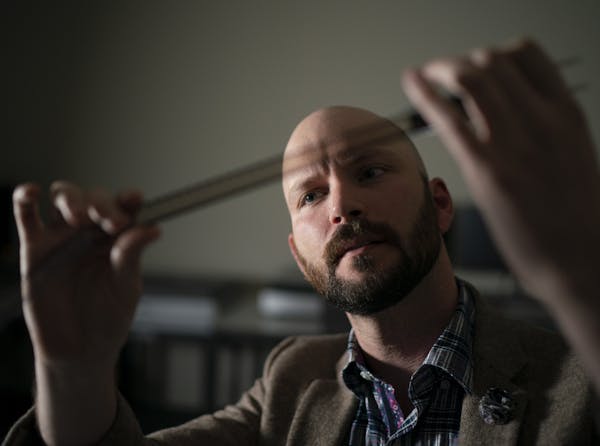When freeways began to circle downtown St. Paul in the 1960s, the city's historic streetscape underwent radical changes. Some streets were eliminated, while others were rerouted, truncated or given new names.
One of the more fascinating of St. Paul's lost streets is a stretch of Smith Avenue that was obliterated to make way for Interstate 35E. The four blocks along Smith harbored a fine array of buildings, including two outstanding late-19th-century apartment blocks, an impressive Masonic temple and several mansions.
The lost section of Smith was a classic example of what I call a "downtown edge" neighborhood, home to a mixed array of residential, institutional, industrial and commercial buildings.
The neighborhood's undisputed jewel was the Hotel Barteau, a six-story apartment building later known as the Piedmont Apartments. Located at the corner of Smith Avenue and 9th Street (smack in the middle of I-35E), the Barteau was one of St. Paul's great Victorians.
It was built in 1889 by newlyweds William and Mary Barteau, about whom little is known other than their frequent appearances in court fending off fraud claims brought by Barteau's wealthy first wife. Local newspapers gave considerable coverage to the lawsuit, but unfortunately had little to say about the new apartment hotel, which was a dazzling piece of Romanesque Revival architecture.
Built of brick and sandstone, it pulsated with bays, balconies, turrets, arches and oriels, culminating in a corner tower crowned by a witches' hat roof. No other apartment building of its time in the Twin Cities offered a more romantic spectacle.
The building's designer was Albert Zschocke, a flaring meteor of an architect who had a short but spectacular career in St. Paul. Born and educated in Germany, Zschocke arrived in St. Paul in 1883 at age 24. He established his own architectural practice, and quickly won commissions to design houses, apartment buildings and schools.
The Barteau, Zschocke's largest project, was a marvelous example of his highly picturesque style. It was also one of his last works. He died in 1892 at age 33 of typhoid fever, leaving behind a wife and five children.
Two other notable buildings — the Edward Hotel and the Masonic Temple — stood just a block south of the Barteau at the now-vanished intersection of 6th and Smith.
The three-story Edward Hotel, as it was called in its final years, was at the southwest corner, on an oddly angled site. Built as a six-unit row house, probably in the late 1880s, it featured two massive corner towers, numerous porches and balconies and an ornate central pavilion sporting a split pediment. Like most row houses, it was later subdivided into apartments, but it appears to have been occupied well into the 1950s and possibly a decade or two after that.
The Masonic Temple, which stood directly across Smith from the Edward Hotel, was a sturdy example of the Renaissance Revival style popular in the early 1900s. Designed by the St. Paul architectural firm of Buechner and Orth, it was built as a home for St. Paul Lodge No. 3 and other Masonic groups. The three-story temple included a sumptuous auditorium, a banquet hall and a library behind its sober stone facade.
The coming of the freeways doomed the old neighborhood. I-35E's route through St. Paul was laid out in the 1950s, and in the years that followed scores of buildings were cleared for its right of way.
Because it sat squarely in the freeway's path, the Barteau had no chance of survival. It was razed without much fanfare in 1969, even though the freeway wasn't finished until the late 1980s because of legal challenges. It's not clear when the Edward Hotel fell to the wrecker, but it may have been around the same time.
The fate of the Masonic Temple wasn't quite as clear-cut.
Although it stood east of the I-35E right of way, the temple was in the way of a planned realignment of 5th and 6th streets for new ramps linking to Interstate 94.
The St. Paul Housing and Redevelopment Authority bought the temple in 1973 with the intent of tearing it down. But a citizens' group intervened, arguing that the building could be reused as a performing arts center.
With I-35E construction on hold, a stalemate ensued and the vacant temple remained standing for eight more years. Then, in May 1981, a five-alarm fire — possibly ignited by transients living inside the building — all but destroyed the temple. It was soon demolished.
Smith Avenue still exists, but it's been realigned and its north end terminates at W. 5th Street, near Xcel Energy Center. Its losses, however, were mirrored elsewhere around downtown St. Paul as the freeways arrived. Because the new interstates so tightly encircled downtown, the old edge neighborhoods (with the exception of the now-thriving Seven Corners area) were wiped out.
Today, the four-block area of Smith Avenue that once offered a rich array of architecture is home to little except roads, ramps and parking lots, a reminder that progress is not always a beautiful thing.
Larry Millett is an architecture critic and author of 14 nonfiction books and eight mystery novels. He can be reached at larrymillett.com.
Read more from Larry Millett: Discover the great architectural mecca that is Minneapolis and St. Paul in the first comprehensive, illustrated handbook of its kind, AIA Guide to the Twin Cities.

Who are the 'Real Americans' when the wealthy are treated like superheroes?
Publishing spinoff of 'Wednesday' has everything from tarot cards to 'Woeful Waffles'

Dinner and a show: Dario a spectacle for talent, pasta and Instagram

Surging auto insurance rates squeeze drivers, fuel inflation







